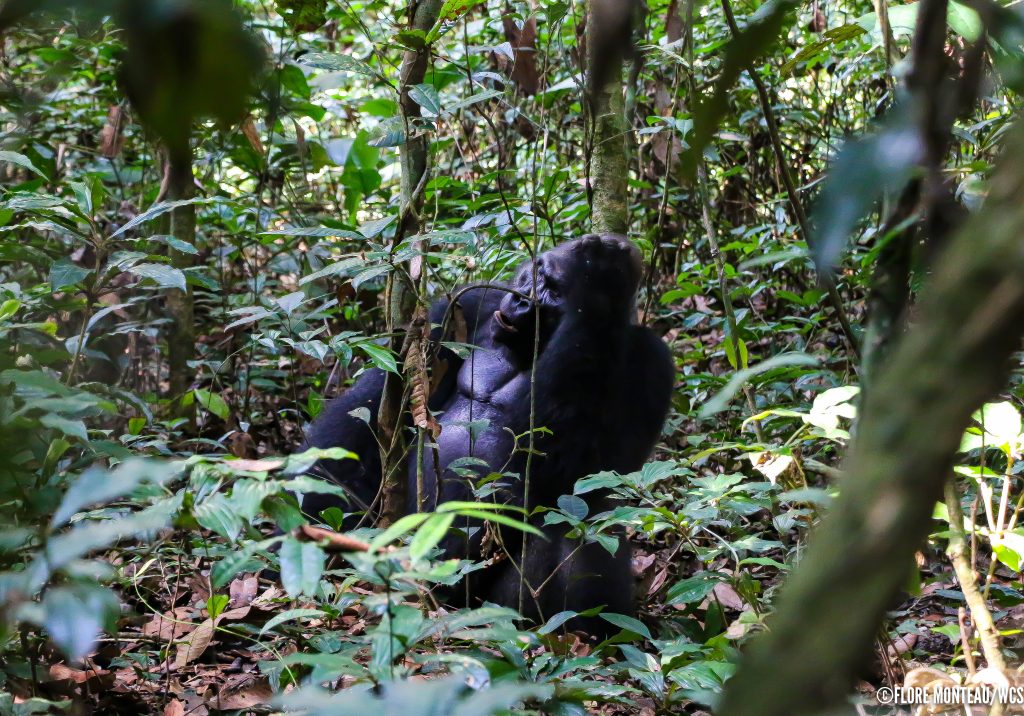Largest study ever in Western Equatorial Africa shows gorillas in deep trouble
In 2018, scientists from ten different organizations assembled the largest survey dataset ever on western lowland gorillas and central chimpanzees. We collated the information on great apes nests from 59 sites in five countries surveyed over 11 years between 2003 and 2013. The study indicated that although there were more gorillas than previously published, they were in deep trouble- declining by a shocking 2.7% every year. On the basis of the results, we were able to recommend three principal ways forward to better conserve this threatened species.

Although all great apes are protected by national laws and international conventions, the combination of poaching and road expansion combined with Ebolavirus disease (EVD) outbreaks has been catastrophic for gorillas and chimpanzees. To conserve great apes effectively, we need to have reliable estimates of their distribution, density, and abundance, and we need to understand the factors driving their population trends across space and time. We then use this information to guide and evaluate the effectiveness of conservation actions at site level (such as a National Park), to identify the best areas to protect, and to advise on regional, species-wide conservation measures that can improve the policy landscape for conservation.

More gorillas than we thought, but a shocking rate of decline.
99% of the planet’s gorillas are western lowland gorillas, and they live in Western Equatorial Africa. In 2013, our study estimated that there were 362,000 western lowland gorillas – higher than previously published! Most of them are found in the two countries: 60% in the Republic of Congo and 27% in Gabon. However, they were declining at a rate of 2.7% maintaining them as Critically Endangered on the International Union for Conservation of Nature and Natural Resources Red List. “At this rate, the reduction in the gorilla population would be expected to exceed 80% over three generations.”

”Fiona Maisels of WCS: ``Our study underscores the huge importance of intact forests to gorillas and chimpanzees, and of preventing illegal felling of good quality forest.``
Efficient protection strategies, but outnumbered.
Although gorilla populations are stable in areas patrolled by ecoguards – both in protected areas such as National Parks and in well managed, FSC-certified logging concessions, they are declining elsewhere. With only 23% of gorillas located in protected areas however, it is critical to ensure stronger protection in the peripheries of PAs and large forest blocks in forestry concessions, for example.
Why are gorillas more vulnerable than chimpanzees? Unlike chimpanzees, gorillas leave obvious trail along the forest floor and are easy for a hunter to follow. A silverback gorilla will defend his family from danger rather than flee as chimpanzees will do, which is of little use when faced with a firearm. The surviving females – if any – and their young will then disperse, which will likely lead to further deaths though infanticide by a new adult male keen to add them to his group.

Unprotected roads and poor road planning threaten great apes.
In the absence of antipoaching, poachers will use roads to access remote areas of forests where wildlife densities are highest and where they can hunt as many animals as possible in a given period of time. As a result, if roads are not protected by guards, the areas along and near roads are severely depleted of wildlife, and gorillas are no exception. However, in areas where there are guards, this road-gorilla density relationship no longer holds, as guards are preventing poachers from operating.
In addition, each time a new road is created through a forest, it provides access to new areas. If conservation issues such as access are not included in the planning of new infrastructure, an unexpected consequence will be the depletion of wildlife in the area.

Ebolavirus disease, last and most unknown factor.
To date, almost 10% of gorilla range has been hit by Ebolavirus outbreaks since the early 1990s, with mortality reaching 90 to 95% in many areas. Gorillas were estimated to have dropped to about a quarter of their potential density in the affected area overall. In protected areas patrolled by ecoguards, some gorilla populations are starting to recover, but as only 23% of the species’ range is protected, it does not bode well for the animals in the remaining 77% of the region.
”Lead author Samantha Strindberg of WCS: “It’s great news that the forests of Western Equatorial Africa still contain hundreds of thousands of gorillas and chimpanzees, but we’re also concerned that so many of these primates are outside of protected areas and vulnerable to poachers, disease, and habitat degradation and loss. These findings can help inform national and regional management strategies that safeguard the remaining habitat, increase anti-poaching efforts, and curtail the effects of development on great apes and other wildlife.``
What can be done?
The three principal threats facing gorillas in Western Equatorial Africa are hunting for meat, habitat loss and modification, and disease (especially Ebolavirus).
The most important thing to do right now to tackle the first two threats is to ensure that the present ape strongholds- which are the protected areas and the logging concessions- are well-protected by ecoguards. Guards can do two things- they can stop poaching, which is the most important threat at the moment in the region- and they can also stop illegal logging. This is part of the remit of both the protected areas and the logging industry- a great deal of conservation outside the protected areas can and has been done where companies abide by the Forest Stewardship Council (FSC) Standards, which include ensuring antipoaching and habitat protection.
Habitat loss is going to be an increasingly important threat in this region in the coming decades, as industrial agriculture takes off- especially huge monocultural concessions of crops such as oil palm, and perhaps rubber. Thus, the other really important step for great ape conservation is long-term land use planning to ensure that new, large agricultural concessions are located in areas where the forest has already been removed and the apes are already long gone (such as around the cities of the region).
The existing early alert system for Ebolavirus outbreak pioneered in Congo should be extended elsewhere, and diligent disease control measures are needed to minimize impact of potential outbreaks. Research into disease ecology and Ebola vaccine delivery needs to be continued.
Finally, people value what they understand. Continuous conservation advocacy and policy work with communities, industry and decision-makers needs to be part of the long haul to ensure a future for our fascinating relatives, the gorillas and chimpanzees of Central Africa.
WCS is committed to achieve these goals by continuous capacity building, excellent management of protected areas, stronger protection in the areas surrounding protected areas, research into Ebolavirus disease, and working with Governments, regional institutions and international agencies to improve conservation policy and practice across the world.

